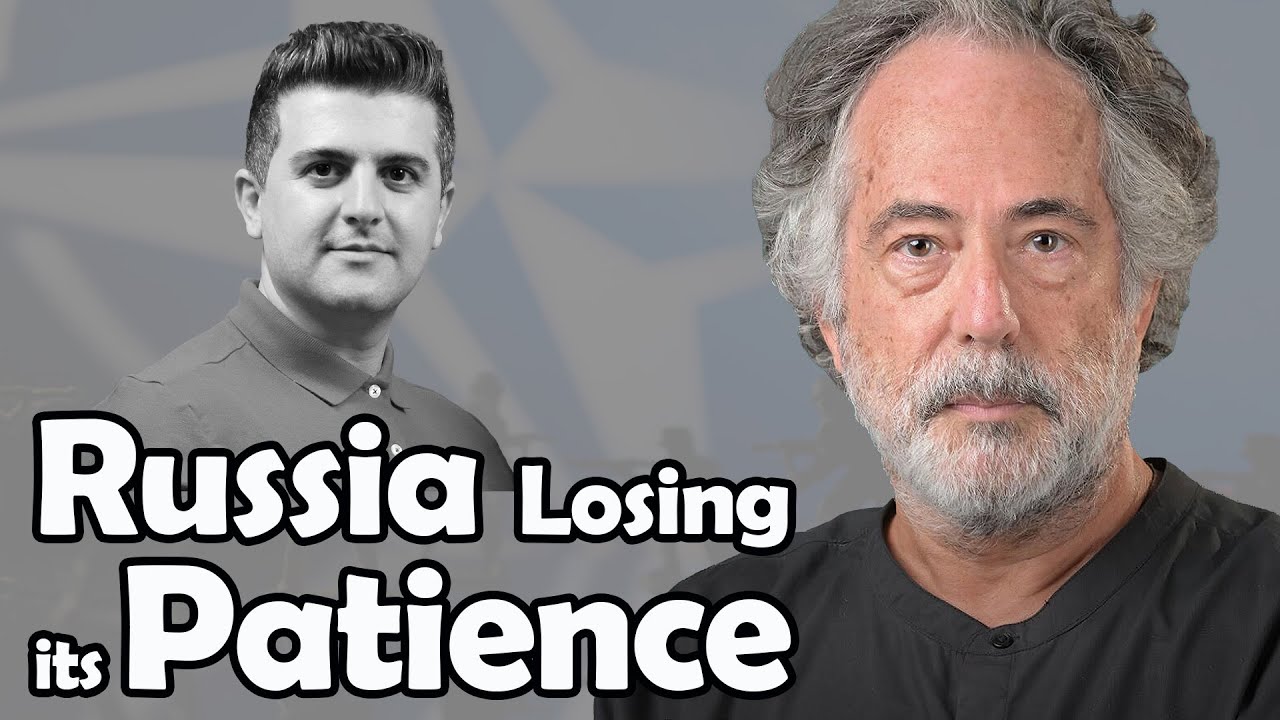Interested in helping with a community I manage? Interact with posts.
Mantra: “We should focus our actions, time, and resources on Direct Action, Mutual Aid, and Community Outreach… No War but Class War!”
FYI: Human, check reCAPTCHA log /s
[Song: Civil War] https://youtu.be/fabi8nyjsYc
- 104 Posts
- 176 Comments

 0·4 hours ago
0·4 hours agoIMHO: Always help out the working-class people if you can; the homeless and’middle class’ are the working-class.
You don’t have to let them in your home or do too much, but I would offer them a box with food, plenty of water, and a basic care package.
We all need to make time to join in helping our local communities. 1 hour a year is much more helpful than 0 hours a year.
Mantra:
“We should focus our actions, time, and resources on Direct Action, Mutual Aid, and Community Outreach… No War but Class War!”

 0·4 days ago
0·4 days agoIt was known by people that read and listen to independent journalists. Good to see main stream media finally talking about this possibility.
Here are some short videos where it is mentioned:
- Hostage families accuse Israeli army of killing loved ones [06:22 | JAN 30 24 | The Grayzone] https://youtu.be/h9iFiuqkmbE
- Prof Mearsheimer: IDF killed a ‘good number of Israelis’ on October 7 [01:33 | DEC 18 23 | Middle East Eye] https://youtu.be/iZlQOjq4EvM
The Grayzone’s Max Blumenthal and Aaron Mate discuss new allegations by family members of Israelis held in Gaza that the Israeli military is deliberately killing their loved ones in order to prevent a prisoner swap and prolong the war.
Renowned scholar Professor John Mearsheimer recently asserted that on October 7th, it was the Israeli regime, not Hamas, responsible for the deaths of many Israelis. He also delves into their official “Hannibal doctrine,” which involves the controversial practice of killing their own people.
This was not the first order given by the division with the intent of foiling kidnapping even at the expense of the lives of the kidnapped, a procedure known in the army as the “Hannibal procedure.”
This is the procedure when an enemy invades Israeli territory, upon which a division commander can assume extraordinary authority, including the employment of heavy fire inside Israeli territory, in order to block an enemy raid.
“Everyone was shocked by the number of terrorists who had penetrated the base. Even in our nightmares, we didn’t have plans for such an attack. No one had a clue about the number of people kidnapped or where army forces were. There was crazy hysteria, with decisions made without any verified information,” he continued.
“Everyone knew by then that such vehicles could be carrying kidnapped civilians or soldiers,” a source in Southern Command told Haaretz. “There was no case in which a vehicle carrying kidnapped people was knowingly attacked, but you couldn’t really know if there were any such people in a vehicle. I can’t say there was a clear instruction, but everyone knew what it meant to not let any vehicles return to Gaza.”
Over all the months that have passed, the IDF has refused to say whether this procedure was employed against civilians who had been taken hostage. It now seems that even if the answer is positive, the question may have been only a partial one. The actions of Hiram may have simply been congruent with the way the IDF operated that day.
 0·12 days ago
0·12 days agoMMP’s removal of Azov is significant in that it could be used to guide U.S. foreign policy. Though MMP was created and has operated with funding from the Departments of Defense and Homeland Security, the papers written by its researchers are cited in academic research, reports and testimony to Congress, government–funded institutions and initiatives, and federal agencies. The website functions as an authoritative source for information on militant and extremist groups, and their interactions and connections over time. At the very least, Azov’s removal means MMP’s list no longer contradicts the State Department’s decision allowing U.S. military assistance to the group, and therefore cannot be used to criticize it.
Founded in March 2014 as a volunteer unit to fight pro-Russian separatists in the eastern Donbass region, Azov was subsequently incorporated into the Ukrainian National Guard, and gained international attention for its role in re-taking the southeastern Ukrainian city of Mariupol from separatist forces in June 2014. During this engagement, Azov also received scrutiny for its neo-Nazi iconography, in particular an inverted Wolfsangel superimposed over a Black Sun (the former an ancient runic symbol appropriated by the Nazis, per the ADL, the latter “based on a design commissioned by SS leader Heinrich Himmler, and overwhelmingly used by neo-Nazi and esoteric National Socialist movements,” according to the MMP’s now-removed Azov Battalion profile).
Azov came to renewed prominence following Russia’s February 2022 invasion due to its high-profile defense of Mariupol that spring. The destructive battle, during which large swaths of Mariupol’s residential infrastructure were damaged or destroyed, ended in a drawn-out siege of the Azovstal steel plant, beneath which surviving Azov and Ukrainian servicemembers retreated until their May 2022 surrender. The battle for Azovstal garnered substantial international media attention due in part to Azov’s use of Starlink terminals to publish videos about the conditions of the Ukrainian defenders.
This is false. As reported by The Nation, many of Azov’s current leaders, including Commander Denys Prokopenko and Deputy Commander Sviatoslav Palamar, have years-old ties to far-right groups, and the brigade continues to don Nazi symbols on the battlefield and social media. Indeed, Azov has never stopped using the Wolfsangel symbol, which is still part of its official logo and featured on its X/Twitter page. Azov’s founder, Andriy Biletsky, a blatant white supremacist who reportedly said Ukraine’s national mission was to “lead the white races of the world in a final crusade … against Semite-led Untermenschen [subhumans],” remains closely connected to the unit despite his supposed departure in fall 2014. In his 2022 book From the Fires of War: Ukraine’s Azov Movement and the Global Far Right, author and journalist Michael Colborne argues Azov has not divorced itself from the far right, writing that “[d]espite unconvincing efforts to separate the two, it’s clear that the Azov Regiment is part of the broader Azov movement and should not be treated as something distinct from it.”
MMP’s removal of Azov’s profile came a little over a month before the State Department’s decision to lift the longstanding ban on the provision of American weapons to the brigade. The State Department, which originally banned arming Azov due to concerns over its far-right extremism, rescinded this policy because the brigade recently “passed Leahy vetting as carried out by the U.S. Department of State,” as reported by the Washington Post on June 10. While a Congressional ban on military assistance to the “Azov Battalion” remains in place under appropriations laws, the State Department said it didn’t believe the congressional ban applied to the group as it exists today, per the Post.
“Leahy vetting” is in reference to the Leahy Law, which prohibits the United States from funding “foreign security forces where there is credible information implicating that unit in the commission of gross violations of human rights,” per a State Department fact sheet. In reality, not only is the State Department’s original concern around Azov’s ideological extremism still germane, but the force’s human rights record has remained checkered since its founding as a non-state volunteer militia in 2014. Indeed, Azov has been credibly accused of torture, forced disappearances, and extrajudicial killing, all of which are “gross violations of human rights” that would disqualify a military unit from receiving U.S. military aid, according to the State Department’s interpretation of the Leahy Law. Many of Azov’s alleged human rights abuses, which also include the use of civilian infrastructure for military purposes and looting of civilian homes, occurred after the unit was formally integrated into the Ukrainian National Guard in late 2014.
Stanford launched MMP in 2009 and operated the project until 2012 using funding from the Department of Defense and the National Science Foundation. In 2019, MMP received funding from the Department of Homeland Security, per the project’s website. The academics behind MMP also have deep ties to American defense.

 0·12 days ago
0·12 days agoGovernment censorship will cause TikTok’s services in the US to shut down, which will result in most users moving to another social media platform.
I think most people already use multiple platforms, so the only difference will be the time they put into their new main social media.
It is due to breaking the only rule this community has:

Here ya go:

All is well, it was only:


 0·14 days ago
0·14 days agoAritcle: https://thecradle.co/articles/the-brics-weigh-in-on-palestine
About channel:
Dedicated to dialogue and peace!
At Dialogue works, we believe there’s nothing more unstoppable than when people come together.
This group’s mission is to create a global community of diverse individuals who will support, challenge, and inspire one another by providing a platform for Dialogue.

 0·15 days ago
0·15 days agoWow, Judge Napolitano is on a roll with all these great interviews!
He just finished an interview with Prof. John Mearsheimer.
Prof. John Mearsheimer : Israel’s Deep Troubles [29:05 | JUN 27 24 | Judge Napolitano - Judging Freedom] https://youtu.be/p6j48PSCNLw&t=31
Prof. John Mearsheimer : Israel’s Deep Troubles

 0·15 days ago
0·15 days agoEdit: I bolded the closest timestamp to the start of your video link.
Adrian Verbrugge speaks with colonel Douglas Macgregor, decorated combat veteran in the US Army and former senior advisor to the Secretary of Defense under Donald Trump.
Macgregor is the author of five books, a PhD, and an expert in strategy, policy, and defense. The conversation centers around ‘Margin of Victory. Five Battles that Changed the Face of Modern War’, a book by Colonel McGregor that was published ain 2016.
This conversation was recorded at the studio of ‘Our Country, Our Choice’ in Orlando, Florida.
Timestamps:
- 0:00 Leader
- 0:42 Introduction
- 1:21 War & the future of the west
- 1:34 Three types of war
- 2:47 What kind of wars are the parties fighting?
- 12:47 On civil war and western support for Ukraine
- 15:50 What was Putin thinking when he went in?
- 17:44 How both sides perceive and misread each other
- 20:12 Stoking old fires
- 21:46 More misjudgements
- 23:20 When the Russian forces first entered Ukraine
- 25:24 Cognitive dissonance and demonisation
- 28:30 History and the dangers of regime change
- 30:09 A change of strategy: war of decision / Transformation under fire
- 34:43 Transition to a war economy
- 36:06 Unity of command / Different structures of command
- 40:59 Instant links: Intelligence, surveillance and reconnaissance
- 44:25 Unity of effort: an army based on function
- 46:19 The integrated air defense umbrella
- 50:32 An estimate of casualties
- 51:33 Television generals
- 54:29 What kind of war are the Ukrainians in right now?
- 59:03 Does Putin have a ‘masterplan’?
- 1:01:00 War on the west? / The Peloponnesian War
- 1:05:15 A spirit of triumphalism /
- 1:06:38 What brings down great powers? / Bewitched by technology
- 1:10:27 The unipolar moment
- 1:13:15 A steady march toward more and more interventions
- 1:17:48 The Peloponnesian war revisited
- 1:21:58 A kingdom divided against itself
- 1:22:11 The neocons & the Project for the New American Century
- 1:24:38 A sinister agenda
- 1:27:03 War with different means
- 1:33:41 The clash of civilations
- 1:39:06 Will there be a backlash in Ukraine?
- 1:41:09 Do we have a clue? / “NATO has outlived its utility”
- 1:46:10 Out of control? / Cromwellian revolution
- 1:56:52 A great awakening?
- 1:59:43 Heraclitus / War is the father of all, and king of all
___
Keep fighting the good fight, OP!

 0·15 days ago
0·15 days agoThank you.
Rejecting science, no good.
You have the science, good!

 0·15 days ago
0·15 days agoDo you have kids or pets that like to play with the toilet paper roll?
If yes, then Under.
If no, then Over.

 0·16 days ago
0·16 days agoProps, keep up the good work!
I will try and do the same, hahaha

 0·16 days ago
0·16 days agoAwesome!
Thanks for the additional information, about INSTC!

 0·17 days ago
0·17 days agoNew of BRICS and going away from petrodollar, it will be in the history books, if allowed.
Interesting news keeps coming out.
India has been ramping up purchases of both coking and thermal coal from Russia since Moscow redirected exports from EU countries and offered substantial discounts to Asian buyers. Despite its efforts to expand renewable energy projects, India continues to rely heavily on coal as its primary source of power generation. Huge increase in Russian coal exports to India
Consulting firm Yakov and Partners (formerly McKinsey Russia) has projected that India will surpass China as the top buyer of Russian coal within the next decade.
Moscow is seeking to both ensure interconnectivity throughout the INSTC and launch regular freight shipping lines, President Vladimir Putin has said. The volume of goods shipped via the INSTC is expected to almost triple over the next seven years. The Russian leader has suggested establishing a logistics hub for the corridor on the African coast.
Nice!
Some may say, hobnobble…
Does not sound as good as yours though, hahaha
Edit1: memes->meme
Edit3: meme->memes, undid fix, seems memes is more active, if that is what you meant…
Forgot the !, then it is linkable:
!memes@lemmy.world here ya go.
What about the Hobble…, half-hobbyte…?


























I enjoyed the song; nothing outstanding, but it is okay.
Quick search how the song is being rated:
VS.
Source: https://www.albumoftheyear.org/song/311597-fuel/